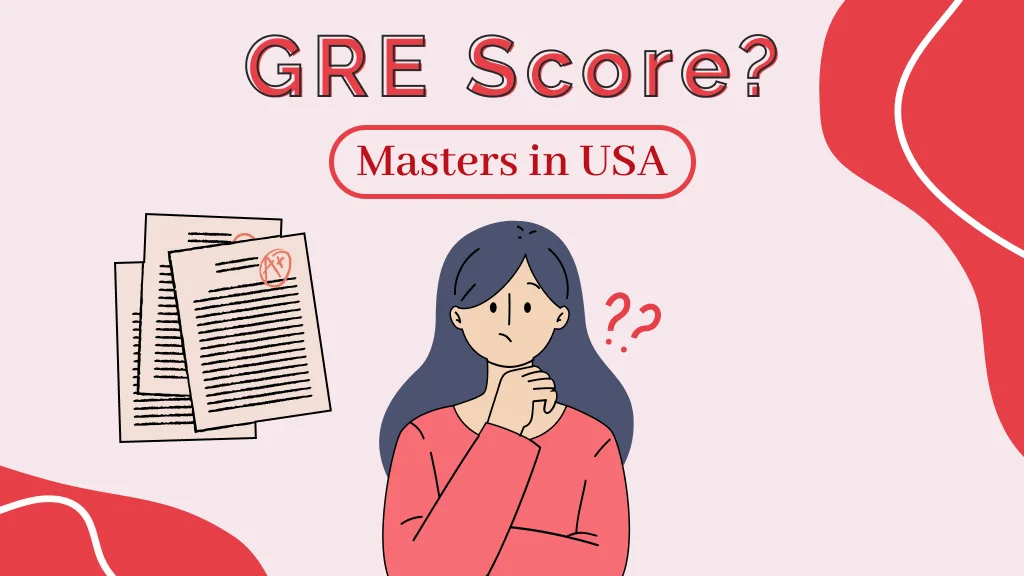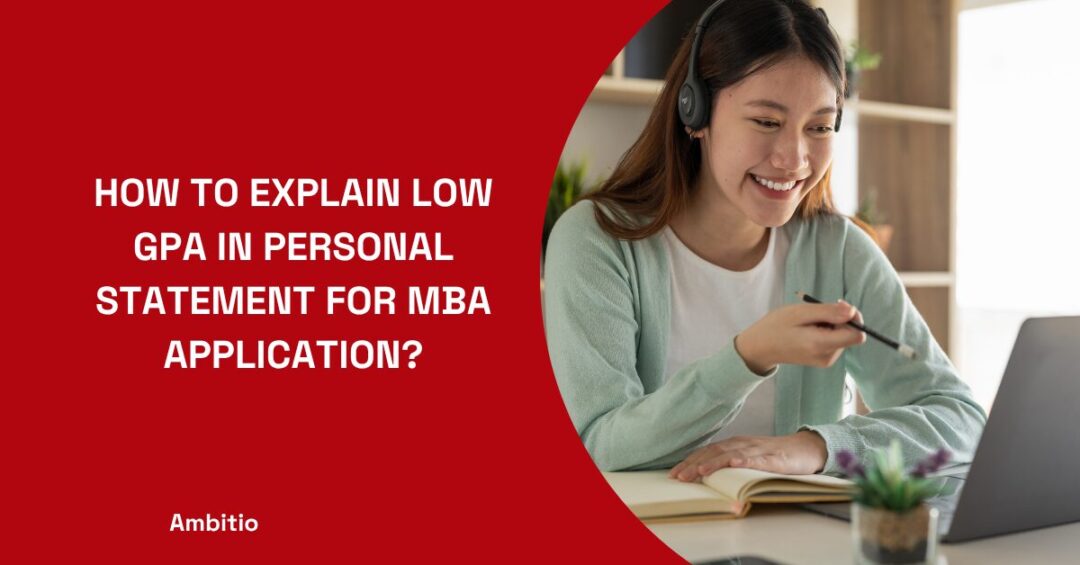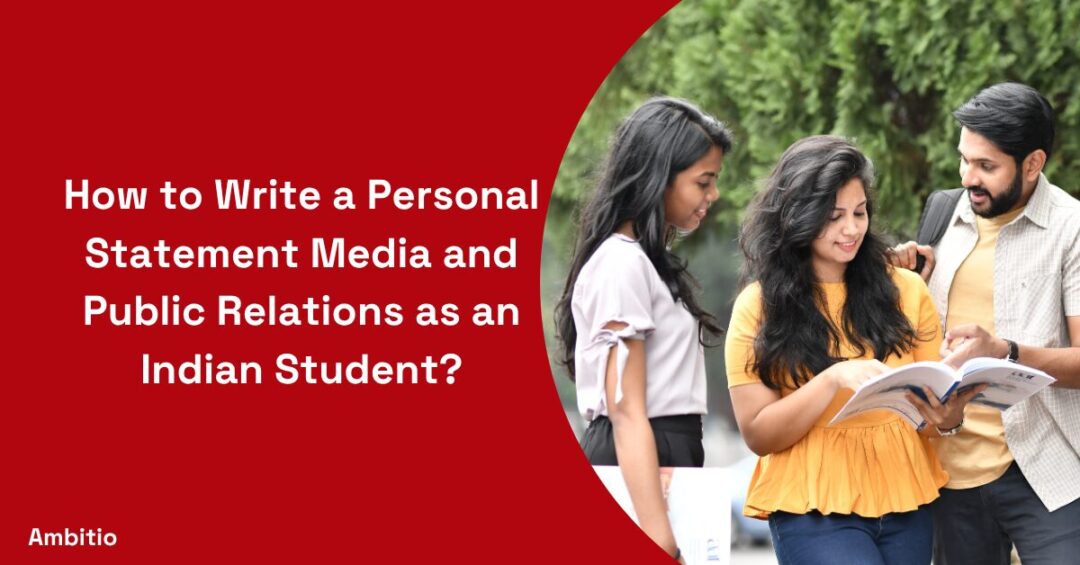8 April 2025
5 minutes read
How to Write a Winning Personal Statement for MBA in Australia?

Key Takeaways
- Personal statement for MBA in Australia is your strongest tool to stand out and must reflect your goals, experience, and program fit.
- Tailor each SOP with clarity, real examples, and alignment to the university’s expectations.
- Start early, stay authentic, and revise well to make a lasting impression.
Over 50,000 international students apply for postgraduate business programs in Australia each year, but only a fraction submit a personal statement for MBA in Australia that truly stands out. Most applicants struggle not because they lack talent, but because they don’t know how to write a personal statement that honestly reflects their aspiration, professional experience, and future goals.
If you’re hoping to study in Australia, secure a student visa, or win a scholarship, your MBA personal statement can make or break your application. The truth? The admissions committee isn’t looking for perfection, they want clarity, alignment, and a well-told academic journey.
Why a Personal Statement for MBA in Australia Is Crucial for Your Application?
A personal statement for MBA in Australia is not just another part of the application process, it’s your voice in a pile of paperwork. While your qualification, educational background, and professional achievements tell what you’ve done, the statement of purpose (SOP) tells why you did it and where you’re headed. Top business schools across every Australian university rely on this to assess your alignment with their MBA program, your future aspirations, and how you’ll add value to their classroom.

When you apply for an MBA, especially at a university in Australia ranked high in world university rankings like Times Higher Education, a generic SOP won’t cut it. You need to tailor it with specific examples, case studies, and proof of problem-solving, management skills, adaptability, and entrepreneurship. A well-written MBA essay should reflect your relevant experience, relevant coursework, extracurricular activities, and long-term aspirations, all while answering the specific questions asked by the admissions team. If you want the best chance at enrolment, scholarships for international students, or visa clearance to study abroad, start writing your SOP early and refine it to match the specific program you’ve chosen to study.
What to Include in Your Personal Statement for MBA Admission in Australia?
When preparing your personal statement for MBA in Australia, it’s important to go beyond generic content and align your experiences, goals, and motivations with the values of the educational institutions you’re applying to. This isn’t just a formality; it’s a core part of your MBA application that helps the admissions team understand your purpose for an Australian MBA, and how you fit into their master of business administration program.

Knowing how to write an effective SOP means understanding the structure, tone, and depth required to submit a statement that stands out. Here’s what to include:
- Clear Career Goals: Mention what you want to pursue after your MBA and how the program will support your growth opportunities in areas like financial markets, common business practices, or entrepreneurship.
- Academic and Professional Background: Highlight your academic record and professional background, showing how they’ve prepared you for the practical learning and leadership challenges an MBA demands.
- Reasons for Choosing Australia: Talk about why Australia is your chosen study destination, including its educational institutions, reputation for practical learning, and global MBA personal statement examples of success.
- Program Fit and Alignment: Tailor your SOP for the specific program at each university. Show how your goals align with the curriculum designed to develop your acumen and leadership qualities.
- Extracurricular and Leadership Experience: As a student of business, reflect on students with an opportunity to lead. Include examples that demonstrate your initiative, adaptability, and teamwork.
- Academic Interests: Share areas you’re interested in learning, from financial markets to management skills, to show your curiosity and readiness for a comprehensive understanding of business.
How to Structure a Personal Statement for MBA in Australia?
A well-structured personal statement for MBA in Australia can be the difference between acceptance and rejection. Most university applications follow a similar format, but understanding how to write a compelling and organized SOP is key when applying to an SOP for Australian universities. Your statement should be clear, focused, and two pages long at most, concise yet comprehensive.
Here’s a simple structure that provides students with clarity and flow:
- Introduction: Begin with a hook and briefly mention your motivation to enrol in an MBA. Give the reader a snapshot of your academic and professional background.
- Academic Background: Highlight key achievements and relevant coursework that prepared you for business studies. Keep this section aligned with your intended program.
- Professional Experience: Describe your work experience, leadership roles, and real-world impact—connect them to your desire to pursue an MBA.
- Career Goals & Program Fit: Explain your short- and long-term goals. Show how the Australian MBA program will help you reach them and why it’s your ideal fit.
- Conclusion: Reiterate your passion and readiness. End with a forward-looking statement about what you aim to gain and contribute after enrolment.
5 Expert Tips for Writing an MBA Personal Statement
Writing a compelling personal statement for MBA in Australia can feel overwhelming, but it’s your best chance to make a strong first impression. These expert tips on writing will help you craft a clear, honest, and impactful statement that truly stands out.
Start with a Clear Purpose
Before you begin, know exactly why you want to pursue an MBA. Clarity of purpose is one of the top tips on writing a strong personal statement for MBA in Australia that resonates with admissions teams.
Show, Don’t Just Tell
Avoid vague claims. Use real examples to highlight your achievements and goals. This is one of the most overlooked tips on writing, specificity builds trust and impact.
Tailor It to the Program
Never use a one-size-fits-all approach. Customize your personal statement for MBA in Australia for each university to show genuine interest and fit.
Be Honest and Reflective
Admissions committees value authenticity. Share your challenges and what you’ve learned, this adds depth and shows maturity.
Edit Ruthlessly
A polished SOP is a powerful one. Among the top tips on writing, this cannot be stressed enough, revise multiple times to ensure clarity, coherence, and flow.
10 Top Universities to Study in Australia
Australia is one of the most sought-after study destinations for business education, attracting over 20,000 international students annually for its MBA programs. With globally accredited degrees, high graduate salaries, and strong industry connections, studying an MBA in Australia can unlock powerful career opportunities worldwide.
Here’s a quick comparison of the top universities to study MBA in Australia:
| University | Average Tuition Fees (AUD) | Average Salary After MBA (AUD) | Exams Required |
|---|---|---|---|
| University of Melbourne (Melbourne Business School) | 90,000 – 100,000 | 130,000 – 140,000 | GMAT / GRE / Interview |
| UNSW (AGSM) | 85,000 – 95,000 | 120,000 – 130,000 | GMAT / GRE / Interview |
| Monash University | 45,000 – 60,000 | 100,000 – 110,000 | GMAT / Work Experience |
| University of Sydney Business School | 65,000 – 75,000 | 110,000 – 120,000 | GMAT / GRE / Interview |
| Macquarie University (MGSM) | 80,000 – 90,000 | 115,000 – 125,000 | GMAT / GRE |
| UQ Business School (University of Queensland) | 70,000 – 80,000 | 110,000 – 115,000 | GMAT / GRE |
| University of Western Australia | 60,000 – 70,000 | 95,000 – 105,000 | GMAT / Work Experience |
| RMIT University | 45,000 – 55,000 | 90,000 – 100,000 | No GMAT required |
| Deakin University | 50,000 – 60,000 | 90,000 – 100,000 | No GMAT required |
| University of Technology Sydney (UTS) | 50,000 – 60,000 | 95,000 – 105,000 | GMAT optional |
Conclusion
Crafting a compelling personal statement for MBA in Australia is your chance to stand out and show who you are beyond grades and test scores. It’s not just a document, it’s your story, your ambition, and your future in words. Take the time to make it count.
Need help perfecting your personal statement for MBA in Australia? Get expert guidance and personalized feedback with Ambitio, your partner in building applications that get noticed.
FAQs
What is the purpose of an MBA personal statement?
To showcase your career goals, motivations, and suitability for the program beyond academic scores.
What should I include in my MBA personal statement?
Career goals, leadership qualities, achievements, motivations for an MBA, and how you’ll contribute to the cohort.
How long should my personal statement be?
Typically 500-1000 words; follow the university’s specific guidelines.
How do I structure my MBA personal statement?
Use an introduction, body (career goals, experiences, leadership), and conclusion summarizing your fit for the program.
What common mistakes should I avoid?
Avoid being generic, summarizing your resume, ignoring prompts, or submitting a poorly written statement.
How can I make my personal statement stand out?
Share a unique story, align your goals with the program’s strengths, and show genuine passion.
Should I seek professional help to write my statement?
Yes, if you need expert guidance; otherwise, write authentically and proofread thoroughly.

You can study at top universities worldwide!
Get expert tips and tricks to get into top universities with a free expert session.
Book Your Free 30-Minute Session Now! Book a call now




























